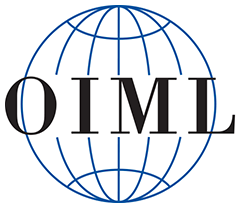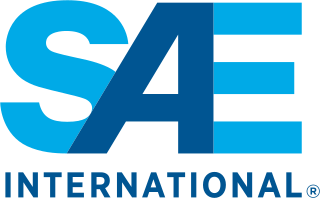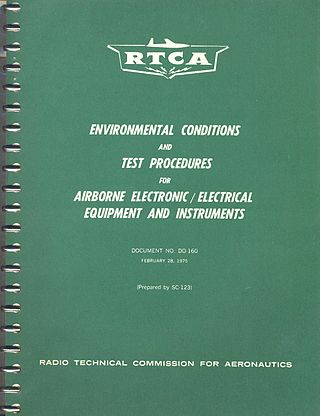
A traffic collision avoidance system, also known as a traffic alert and collision avoidance system, is an aircraft collision avoidance system designed to reduce the incidence of mid-air collision (MAC) between aircraft. It monitors the airspace around an aircraft for other aircraft equipped with a corresponding active transponder, independent of air traffic control, and warns pilots of the presence of other transponder-equipped aircraft which may present a threat of MAC. It is a type of airborne collision avoidance system mandated by the International Civil Aviation Organization to be fitted to all aircraft with a maximum take-off mass (MTOM) of over 5,700 kg (12,600 lb) or authorized to carry more than 19 passengers. CFR 14, Ch I, part 135 requires that TCAS I be installed for aircraft with 10-30 passengers and TCAS II for aircraft with more than 30 passengers. ACAS/TCAS is based on secondary surveillance radar (SSR) transponder signals, but operates independently of ground-based equipment to provide advice to the pilot on potentially conflicting aircraft.

The European Union Aviation Safety Agency (EASA) is an agency of the European Union (EU) with responsibility for civil aviation safety. It carries out certification, regulation and standardisation and also performs investigation and monitoring. It collects and analyses safety data, drafts and advises on safety legislation and co-ordinates with similar organisations in other parts of the world.

A type certificate signifies the airworthiness of a particular category of aircraft, according to its manufacturing design. Certification confirms that the aircraft of a new type intended for serial production is in compliance with applicable airworthiness requirements established by the national air law.

The European Organisation for the Safety of Air Navigation, commonly known as Eurocontrol, is an international organisation working to achieve safe and seamless air traffic management across Europe. Founded in 1960, Eurocontrol currently has 41 member states with headquarters in Brussels, Belgium. It has several local sites as well, including an Innovation Hub in Brétigny-sur-Orge, France, the Aviation Learning Centre (ALC) in Luxembourg, and the Maastricht Upper Area Control Centre (MUAC) in Maastricht, the Netherlands. The organisation employs approximately two thousand people, and operates with an annual budget in excess of half a billion Euro.

The International Organization of Legal Metrology, is an intergovernmental organisation that was created in 1955 to promote the global harmonisation of the legal metrology procedures that underpin and facilitate international trade.
DO-178B, Software Considerations in Airborne Systems and Equipment Certification is a guideline dealing with the safety of safety-critical software used in certain airborne systems. It was jointly developed by the safety-critical working group RTCA SC-167 of the Radio Technical Commission for Aeronautics (RTCA) and WG-12 of the European Organisation for Civil Aviation Equipment (EUROCAE). RTCA published the document as RTCA/DO-178B, while EUROCAE published the document as ED-12B. Although technically a guideline, it was a de facto standard for developing avionics software systems until it was replaced in 2012 by DO-178C.

ARP4761, Guidelines and Methods for Conducting the Safety Assessment Process on Civil Airborne Systems and Equipment is an Aerospace Recommended Practice from SAE International. In conjunction with ARP4754, ARP4761 is used to demonstrate compliance with 14 CFR 25.1309 in the U.S. Federal Aviation Administration (FAA) airworthiness regulations for transport category aircraft, and also harmonized international airworthiness regulations such as European Aviation Safety Agency (EASA) CS–25.1309.

ARP4754, Aerospace Recommended Practice (ARP) ARP4754A, is a guideline from SAE International, dealing with the development processes which support certification of Aircraft systems, addressing "the complete aircraft development cycle, from systems requirements through systems verification." Revision A was released in December 2010. It was recognized by the FAA in AC 20-174 published November 2011. EUROCAE jointly issues the document as ED–79.
RTCA DO-254 / EUROCAE ED-80, Design Assurance Guidance for Airborne Electronic Hardware is a document providing guidance for the development of airborne electronic hardware, published by RTCA, Incorporated and EUROCAE. The DO-254/ED-80 standard was formally recognized by the FAA in 2005 via AC 20-152 as a means of compliance for the design assurance of electronic hardware in airborne systems. The guidance in this document is applicable, but not limited, to such electronic hardware items as
The Future Air Navigation System (FANS) is an avionics system which provides direct data link communication between the pilot and the air traffic controller. The communications include air traffic control clearances, pilot requests and position reporting. In the FANS-B equipped Airbus A320 family aircraft, an Air Traffic Services Unit (ATSU) and a VHF Data Link radio (VDR3) in the avionics rack and two data link control and display units (DCDUs) in the cockpit enable the flight crew to read and answer the controller–pilot data link communications (CPDLC) messages received from the ground.
RTCA, Inc. is a United States non-profit organization that develops technical guidance for use by government regulatory authorities and by industry. It was founded in 1935 and was re-incorporated in 1991 as a private not-for-profit corporation. It has over 20 active committees with multiple working groups under each committee and develops industry standards in cooperation with aviation regulators from around the world including the FAA.

In aviation, airworthiness is the measure of an aircraft's suitability for safe flight. Initial airworthiness is demonstrated by a certificate of airworthiness issued by the civil aviation authority in the state in which the aircraft is registered, and continuing airworthiness is achieved by performing the required maintenance actions.

A type rating is an authorization entered on or associated with a pilot license and forming part thereof, stating the pilot's privileges or limitations pertaining to certain aircraft type. Such qualification requires additional training beyond the scope of the initial license and aircraft class training.

DO-160, Environmental Conditions and Test Procedures for Airborne Equipment is a standard for the environmental testing of avionics hardware. It is published by the Radio Technical Commission for Aeronautics (RTCA) and supersedes DO-138.
A civil aviation authority (CAA) is a national or supranational statutory authority that oversees the regulation of civil aviation, including the maintenance of an aircraft register.
DO-178C, Software Considerations in Airborne Systems and Equipment Certification is the primary document by which the certification authorities such as FAA, EASA and Transport Canada approve all commercial software-based aerospace systems. The document is published by RTCA, Incorporated, in a joint effort with EUROCAE, and replaces DO-178B. The new document is called DO-178C/ED-12C and was completed in November 2011 and approved by the RTCA in December 2011. It became available for sale and use in January 2012.
Advisory circular (AC) refers to a type of publication offered by the Federal Aviation Administration (FAA) to provide guidance for compliance with airworthiness regulations, pilot certification, operational standards, training standards, and any other rules within the 14 CFR Aeronautics and Space Title. They define acceptable means, but not the only means, of accomplishing or showing compliance with airworthiness regulations. Generally informative in nature, Advisory Circulars are neither binding nor regulatory; yet some have the effect of de facto standards or regulations.

The Advisory Circular AC 20-115( ), Airborne Software Development Assurance Using EUROCAE ED-12( ) and RTCA DO-178( ), identifies the RTCA published standard DO-178 as defining a suitable means for demonstrating compliance for the use of software within aircraft systems. The present revision D of the circular identifies ED-12/DO-178 Revision C as the active revision of that standard and particularly acknowledges the synchronization of ED-12 and DO-178 at that revision.
DO-297, Integrated Modular Avionics (IMA) Development Guidance and Certification Considerations is one of the primary document by which certification authorities such as the FAA and EASA approve Integrated Modular Avionics (IMA) systems for flight. The FAA Advisory Circular (AC) 20-170 refers to DO-297.
The Certification Authorities Software Team (CAST) is an international group of aviation certification and regulatory authority representatives. The organization of has been a means of coordination among representatives from certification authorities in North and South America, Europe, and Asia, in particular, the FAA and EASA. The focus of the organization has been harmonization of Certification Authorities activities in part though clarification and improvement of the guidance provided by DO-178 and DO-254.









